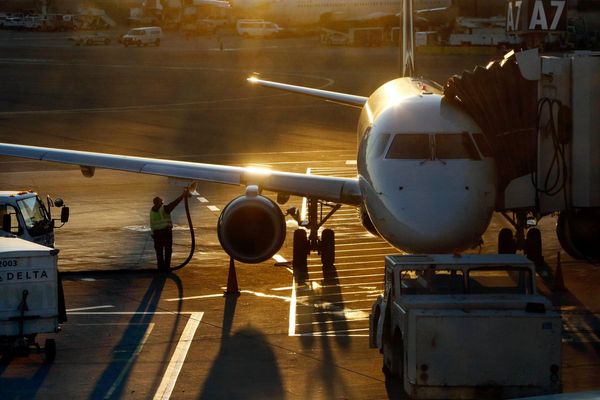
SpaceX was forced to scrap the launch of its giant Starship rocket from Texas again on Monday, this time due to weather, marking the latest in a streak of setbacks for the Elon Musk-run company.
The 232ft (71-metre) tall Super Heavy booster and its 171ft tall Starship upper half – together taller than New York’s Statue of Liberty – was due to take off from SpaceX’s Starbase rocket facilities at 7.30pm local time. But the launch was called off at the last minute.
“Standing down from today’s flight test attempt due to weather,” the company said on X, the social network also owned by Musk.
SpaceX has seen a series of delays as it seeks to achieve several long-sought milestones essential to the rocket system’s reusable design. A liquid oxygen leak at the Starship launchpad nixed a Sunday launch attempt, billionaire Musk wrote on X overnight.
Development of SpaceX’s next-generation rocket, key to the company’s powerful launch business and Musk’s goal to send humans to Mars, has faced repeated hiccups this year. Nasa hopes to use the rocket as soon as 2027 for its first crewed moon landing since the Apollo program.
SpaceX’s Starlink satellite internet business, a major source of company revenue, is also tied to Starship’s success. Musk aims to use Starship to launch larger batches of Starlink satellites, which have so far been deployed by SpaceX’s workhorse Falcon 9 rocket, into space.
Musk, for his part, remained bullish. “In about 6 or 7 years, there will be days where Starship launches more than 24 times in 24 hours,” the entrepreneur said on Sunday, replying to a user on X.
This year, two Starship testing failures early in flight, another failure in space on its ninth flight, and a huge test stand explosion in June that sent debris flying into nearby Mexican territory have tested SpaceX’s capital-intensive test-to-failure development approach, in which new iterations of rocket prototypes are flown to their technical limits. That ethos is markedly different from SpaceX’s rivals such as Jeff Bezos’s Blue Origin, whose New Glenn rocket made an operational debut in January following years of on-the-ground development and testing. The new Vulcan rocket from United Launch Alliance, co-owned by Boeing and Lockheed Martin, had a similar upbringing before its 2024 debut.
With SpaceX’s approach, testing failures early in Starship’s flight prevent the company from gathering vital technical data needed to advance the rocket’s design.
Still, SpaceX, which Musk expects to record about $15.5bn in revenue this year, has continued to swiftly produce new Starships for test flights at Starbase, a sprawling and rapidly growing rocket industrial complex. The area was made a municipality in May by local voters, many of them SpaceX workers.
Starship’s setbacks underscore the technical complexities of the latest iteration. The ship is packed with far more capabilities than predecessor models such as increased thrust, a potentially more resilient heat shield and stronger steering flaps crucial to nailing its atmospheric re-entry – key traits of its rapidly reusable design that Musk has long pushed for.
SpaceX has a lengthy to-do list for Starship’s development before the rocket begins routine missions envisioned by Musk. That includes demonstrating safe returns from space, payload deployments in orbit and complex in-space propellant refuellings crucial to its moon mission assignments from Nasa.
Once in space, Starship will attempt to deploy mock Starlink satellites and reignite an engine along its suborbital path around the globe. Atmospheric re-entry over the Indian Ocean will test its exterior steering flaps and an array of experimental heat shield tiles as the ship blazes through intense friction and heat.
Reuters contributed reporting
The best public interest journalism relies on first-hand accounts from people in the know.
If you have something to share on this subject you can contact us confidentially using the following methods.
Secure Messaging in the Guardian app
The Guardian app has a tool to send tips about stories. Messages are end to end encrypted and concealed within the routine activity that every Guardian mobile app performs. This prevents an observer from knowing that you are communicating with us at all, let alone what is being said.
If you don't already have the Guardian app, download it (iOS/Android) and go to the menu. Select ‘Secure Messaging’.
SecureDrop, instant messengers, email, telephone and post
If you can safely use the tor network without being observed or monitored you can send messages and documents to the Guardian via our SecureDrop platform.
Finally, our guide at theguardian.com/tips lists several ways to contact us securely, and discusses the pros and cons of each.







